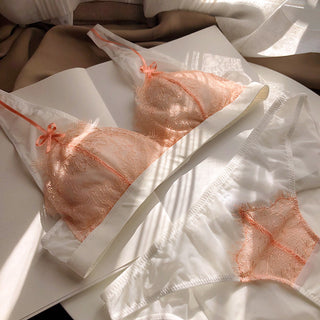Brassieres are a simple piece of garment that are designed for one purpose; to provide adequate support for women’s breasts. But if you look at the history of the bra, you will find that it is actually much more than just a simple piece of undergarment. The long history of the bra, the different designs and materials used to make the bra over the centuries, in fact reflect the way women were initially viewed by a society dominated by men. The evolution of the bra will show not just the improvement of the design or the discovery of different fabrics, but the changing views toward women and the female body throughout social history as well.
Actually, the evolution of the modern bra was inspired by two major aspects—the health concerns brought about by various medical professionals and the ever increasing roles women play in society. The emergence of both these fronts has revolutionized the way we view the brassiere, and with it, the evolution of women’s lingerie.
The history of bras can be traced as far back as the 1st century. The undergarments used by women during this period, particularly the bra, were not what we would consider today as a real bra, but they actually served the same basic purpose—to cover, restrain, modify, and provide support to the female breasts. The earliest bras were as simple as a band of cloth wrapped around the woman’s bust area to provide coverage and restrain the shape of the breasts.
In 15th century China, during the Ming Dynasty, women used a piece of cloth with cups and straps drawn over the shoulders to serve as a bra. During this time period, corsets were the popular support of choice as well, among western women. But then again, not all women in this era had the luxury to wear corsets or other fancy undergarments of the time. It all depended on her social status and the societal constraints placed on all women during that period.
The Edwardian Era saw the beginning of the transformation of corsets into girdles. Girdles, accompanied by an upper garment known as a bust bodice, looked and functioned more like the brassieres we know today.
Most people believe that the push up bra is a relatively new invention, but the oldest push up bra design can actually be traced all the way back to the early 19th century. As women gained a more prominent position in society, the popularity of women’s products began to grow, including undergarments like the bra. During this time, designers looking to cash in on this new niche raced toward the patent office to register their own bra designs. Shortly thereafter, names such as corselet gorge, flynt waist, true corset, and corset substitute began to hit the shelves and emerge in various magazines. The age of women’s lingerie was born.
Initially though, these new bra designs were only popular among women who had legitimate medical reasons not to wear corsets. But the popularity of these new types of bras continued to grow as more and more women started to appreciate and prefer the aesthetics and the comfort they provided. This part of the bra’s history became the precursor to the more comfortable and fashionable brassieres and women’s lingerie we see in the industry today.
Many women’s bras today have underwire in them. In fact, underwire bras are so common today that no 21st century woman doesn’t have at least one underwire bra in her wardrobe. Although not all women find underwire bras comfortable, the added support, lift, and better shape they provide is undeniable. A little known fact about underwire bras is that they were actually invented by a woman named Marie Tucek in 1893, but was poorly marketed and thus, received very little acceptance by most women during that time.
The 20th century saw the growing popularity of brassieres over the conventional corsets. A patent for a backless bra was taken by a woman named Mary Phelps in 1914. This particular design was made from soft and comfortable materials, a huge contrast to the stiff and heavy corset. This laid the foundation of more comfortable, softer, and lighter brassieres. As more and more women began to appreciate the benefits these types of bras had to offer, there was no turning back. Bra design and manufacturing has essentially made a huge leap forward into the types of bras and lingerie we see today.
The golden age of bras, fashion-wise, was during the 1950s. During this time, we started to see glamorous conical cup shapes popularized by Hollywood stars of the era. The stitched longline cone bra gave the support and the perfect silhouette that most girls of this era wanted, to emulate the curves of their favorite film stars. Since the 1950s, bra design has never taken a step backwards. The revolutionary designs, style, and fabrics that we incorporate in women’s bras these days are quite exceptional. Bra fashion, nowadays, also reflects the way women are viewed in today’s society—free, opinionated, and sophisticated.

